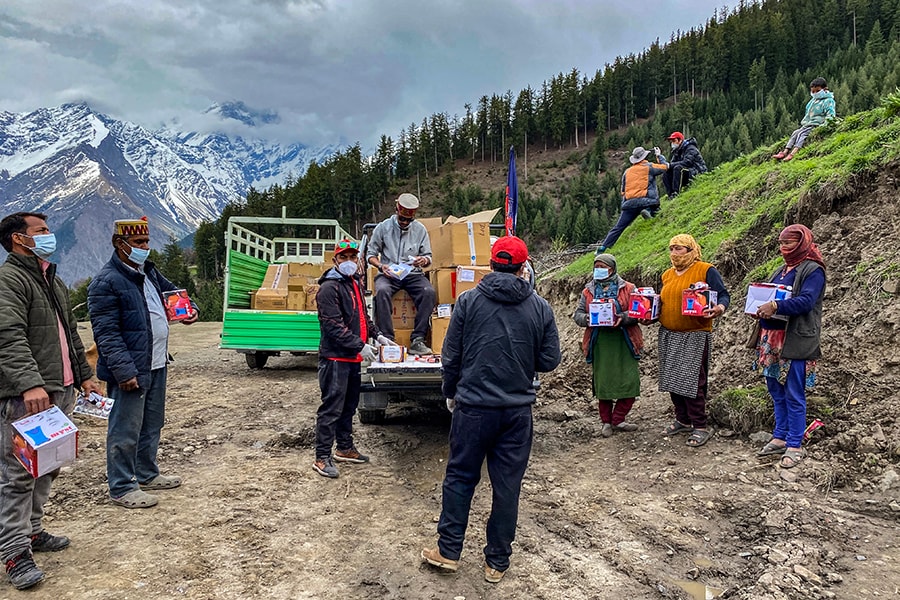
In remote Himalayan villages, a team of volunteers pitches in with Covid-19 care
Live to Love International, an NGO, helps people with vitamins, mental health well-being support, besides sanitising villages and getting oximeters, steamers and oxygen concentrators to villagers
 A volunteer from the Young Drukpa Association, one of Live to Love’s on-ground partner organisations distributing medical supplies; Images: Live to love International
A volunteer from the Young Drukpa Association, one of Live to Love’s on-ground partner organisations distributing medical supplies; Images: Live to love International
Lahaul, Himachal Pradesh — Sushil Kumar starts his day at 7am every day, picking up supplies that are to be distributed in villages in and around Lahaul and Spiti district. This has been his routine for over a year now.
Kumar, a local resident of the area, along with other volunteers from Live to Love International—a non-profit organisation that is providing critical relief aid and resources to neglected Himalayan communities in Ladakh, Lahaul-Spiti and Kathmandu—travels to various villages, providing basic supplies. "No matter what the weather conditions, our volunteers would continue going door-to-door to help out in whatever way possible," says Kumar, adding that travelling to just one village often takes up an entire day.
Kumar is also the president of the Young Drupka Association, one of Live to Love’s on-ground partner organisations, and since 2020, his team has been working on the ground, providing support to both Covid-19 affected patients and helping with preventive measures for non-Covid-19 patients. "In May 2021 we were seeing close to 300-400 patients on a daily basis, people were extremely scared. We focussed on areas where we were seeing a lot more cases," he says. Though Live to Love International does not work directly with doctors and healthcare workers, they help with the peripheral needs of families be it equipment, vitamins or support for mental health well-being. The teams would go and sanitise villages, help out with oximeters and steamers, and get oxygen concentrators to these remote villages.

"The Himalayas in general have abysmal healthcare services and a severe lack of resources, particularly in Lahaul city and Ladakh. For instance, Ladakh currently only has one High Flow Nasal Cannula (HFNC) machine for serious patients,” says Simran Thapliyal, program director at Live to Love International. She adds, “Due to the thin air in these areas and a majorly ageing population, complications like high altitude-induced hypoxia are common and the risk of getting Covid-19 also increases." The health infrastructure there is crumbling already, if a patient needs to be hospitalised they need to travel 110 km from Keylong (in Lahaul) to reach Kullu and there is a huge shortage of oxygen supply.









